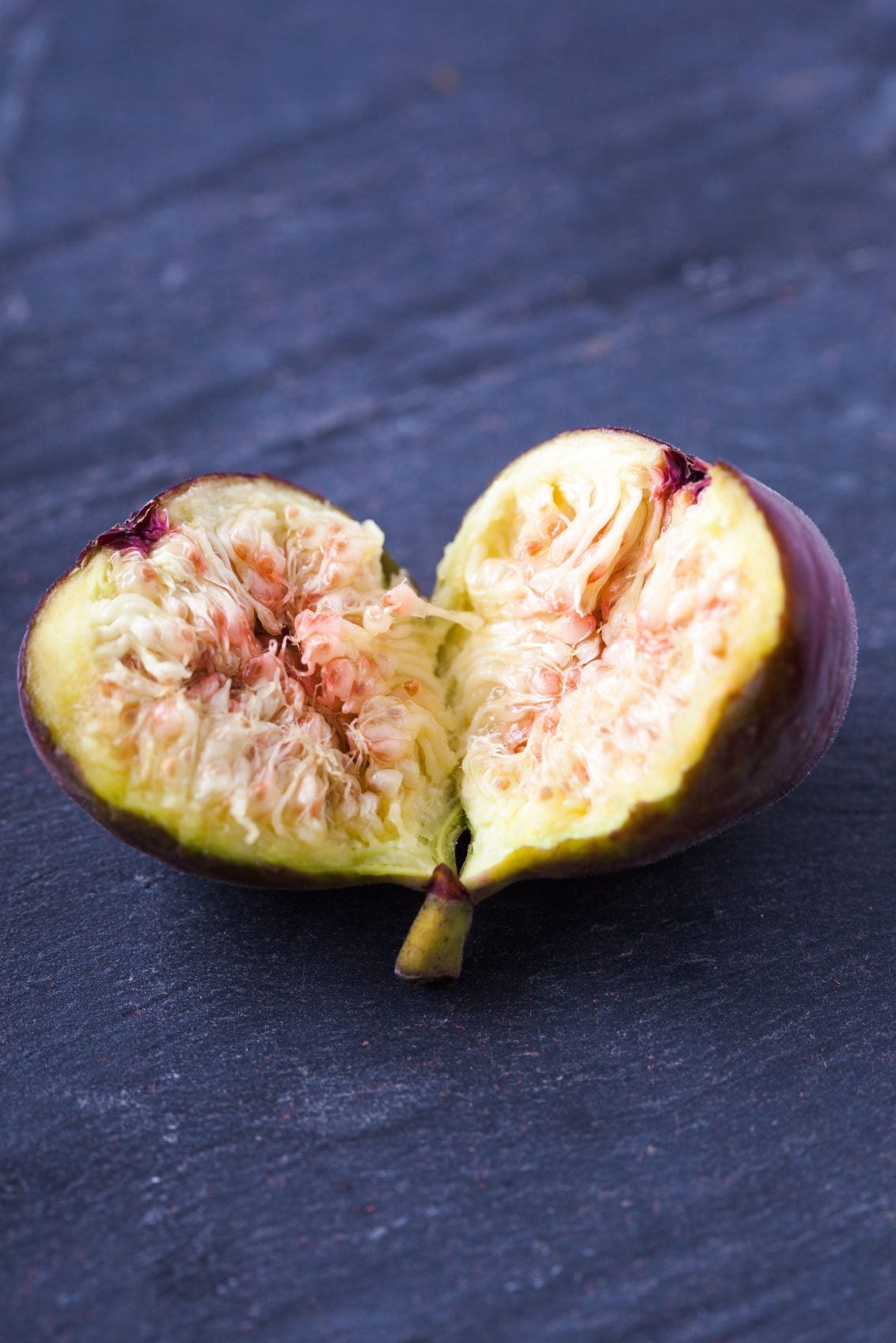Tough, Dry Figs: Why Your Ripe Figs Are Dry Inside

Fresh figs are high in sugar and naturally sweet when ripe. Dried figs are delicious in their own right, but they must be ripe first, prior to dehydrating for optimal flavor. Fresh picked fig tree fruit that is dry inside is definitely not desirable, however. If you have what appears to be ripe figs, but they are dry inside, what's going on?
Reasons for Dry Fig Fruit
One of the more common reasons for tough, dry fig fruit may have to do with the weather. If you have had an especially long spell of excessive heat or drought, the quality of the fig fruit will be compromised, resulting in fig tree fruit that is dry inside. Of course, there isn't much you can control about the weather, but you can make sure to irrigate more frequently and mulch around the tree with straw to aid in water retention and generally reduce environmental stress. Another possible culprit, resulting in tough dry figs, may be a lack of nutrients. In order for the tree to produce sweet, juicy fruit, it must have water, sunlight, and soil nutrients to facilitate the production of glucose. While fig trees are fairly tolerant of soil makeup, it does need to be well drained and aerated. Amend the soil with compost or manure prior to planting a fig sapling and, thereafter, feed the tree with a liquid fertilizer. Figs don't always need to be fertilized, however. Fertilize your fig tree if there is less than 1 foot (31 cm.) of new growth in the course of a year. Look for fertilizers that are made for fruit trees or use a high phosphate and high potassium fertilizer to promote fruit set. Avoid high nitrogen fertilizers; figs don't need much nitrogen. Apply the fertilizer when the tree is dormant during the late fall, winter, and again in early spring.
Additional Reasons for Dry Fig Fruit
Lastly, another reason for seeing ripe figs that are dry inside may be that you are growing a “caprifig.” What is a caprifig? A caprifig is a wild male fig that is home to the fig wasp responsible for pollinating female fig trees. This is most likely the case if your fig tree is there by happenstance instead of a tree that you selected from known cuttings at a nursery. There is an easy fix if this is the case-- simply plant a female fig near the male fig.
Gardening tips, videos, info and more delivered right to your inbox!
Sign up for the Gardening Know How newsletter today and receive a free copy of our e-book "How to Grow Delicious Tomatoes".

Amy Grant has been gardening for 30 years and writing for 15. A professional chef and caterer, Amy's area of expertise is culinary gardening.
-
 Looking For Plants To Give You The Soft And Fuzzies? Try These 5 Fuzzy Leaf Plant Options
Looking For Plants To Give You The Soft And Fuzzies? Try These 5 Fuzzy Leaf Plant OptionsLovers of texture, drama, silver foliage and tactile plants will adore these special sensory garden additions. These fuzzy leaf plant options will leave you all aglow
By Susan Albert
-
 Get Ready For A Summer Of Hummers! Grow These Full Sun Hummingbird Plants and Flowers
Get Ready For A Summer Of Hummers! Grow These Full Sun Hummingbird Plants and FlowersIf you’re lucky enough to enjoy a sunny backyard, make sure you are maxing out on your pollinator opportunities and grow these full sun hummingbird plants and flowers
By Tonya Barnett